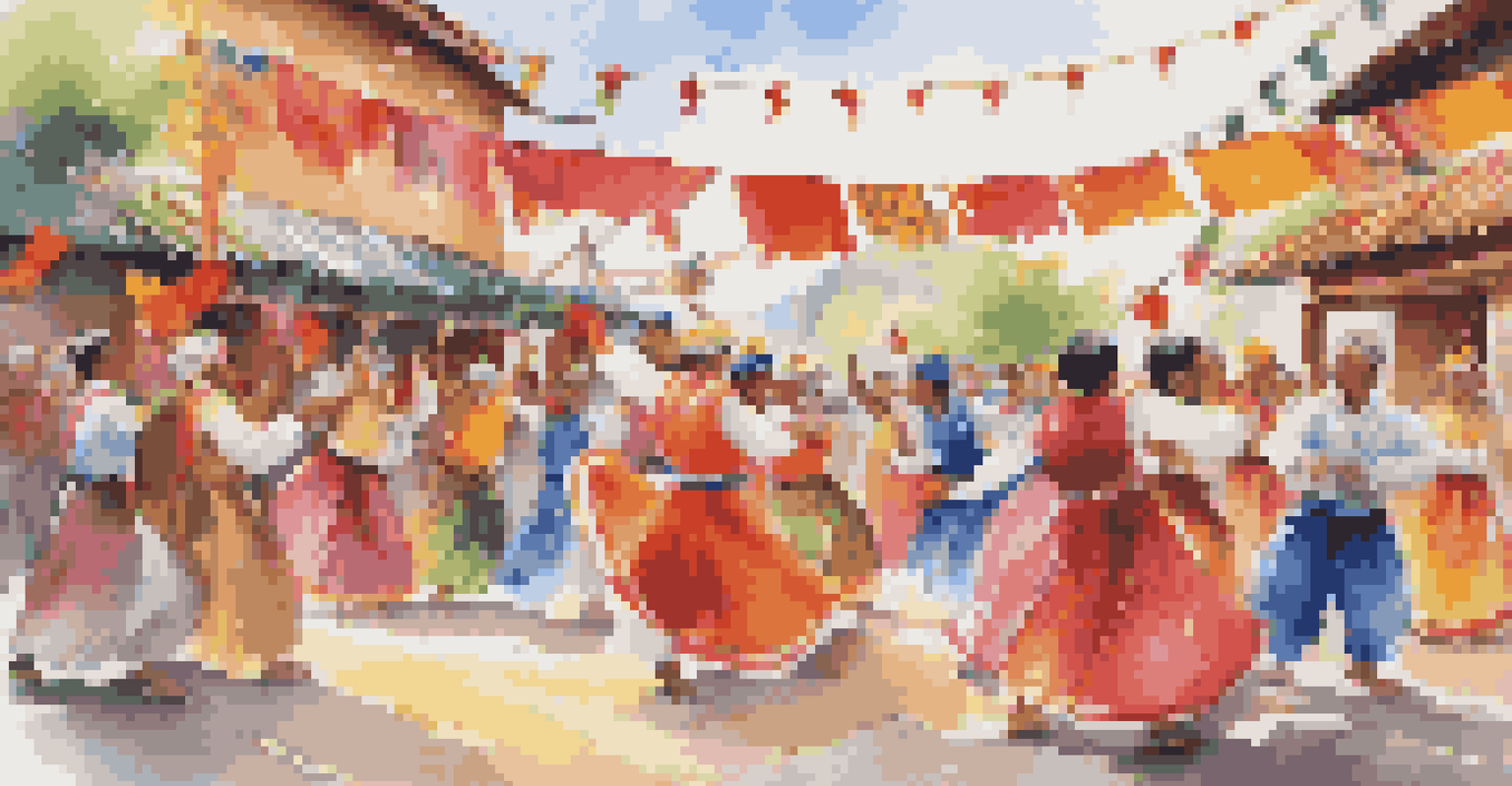Writing About Cultural Experiences During Travel

Understanding the Importance of Cultural Experiences
Cultural experiences are the heartbeat of travel. They provide insights into the local way of life, traditions, and values. When you immerse yourself in a different culture, you gain a richer understanding of the world, which can transform your travel narrative.
Travel not only opens your mind, it also opens your heart.
By sharing these experiences, you not only entertain your readers but also educate them about diverse cultures. This helps to foster empathy and appreciation for differences, making your writing impactful. The goal is to draw readers into your journey, allowing them to feel the pulse of the culture you’ve encountered.
Think of cultural experiences as the colors in your travel palette. They add depth and vibrancy to your story, making it more relatable and engaging. When readers connect with these experiences, they’re more likely to remember them long after they've finished reading.
Choosing the Right Cultural Experiences to Write About
Not every cultural experience will resonate with your audience. It's crucial to select those that are unique, authentic, and reflective of the local culture. Consider experiences that reveal everyday life, such as street food markets, local festivals, or traditional craft workshops.

These moments are often rich in detail and emotion, allowing you to paint a vivid picture for your readers. Think about what made these experiences special for you and how they can evoke curiosity and interest in others. Remember, it's about sharing your perspective and providing a window into another world.
Cultural Experiences Enrich Travel
Immersing in local cultures deepens understanding and makes travel narratives more engaging.
You might also want to consider the stories behind these experiences. For instance, a simple meal can reveal much about a culture’s history, values, and social norms. By weaving in these narratives, you create a more engaging and holistic travel story.
Using Descriptive Language to Bring Experiences to Life
Descriptive language is your best friend when writing about cultural experiences. It allows readers to visualize the sights, sounds, and smells of the environment you’re describing. Instead of saying a market was busy, paint the scene with words: 'The market buzzed with energy, vibrant colors danced before my eyes, and the air was filled with the enticing aroma of spices.'
The world is a book, and those who do not travel read only one page.
Utilizing all five senses can transport your readers right to the heart of your experience. Describe the textures of handmade crafts or the taste of traditional dishes to create a more immersive narrative. When readers can feel, hear, and smell along with you, they become part of your journey.
Moreover, incorporating local phrases or dialects can add authenticity to your writing. Just be sure to provide translations or context so that everyone can understand. This not only enriches your narrative but also shows respect for the culture you’re exploring.
Incorporating Personal Reflections on Cultural Interactions
Travel writing is not just about reporting facts; it’s also about sharing your personal journey. Reflecting on your interactions with locals can provide deeper insights into the culture. How did these encounters challenge your viewpoints or change your understanding?
For instance, if you participated in a local ceremony, describe how it made you feel. This adds a layer of emotional depth to your writing, making it more relatable and engaging. Readers appreciate personal stories that resonate with their own experiences and emotions.
Choose Authentic Cultural Stories
Selecting unique and relatable cultural experiences helps evoke curiosity and connection in readers.
Your reflections can also serve as a bridge for readers, helping them relate to unfamiliar cultures. By sharing your vulnerabilities and learning moments, you foster a sense of connection, encouraging others to embrace cultural experiences in their travels.
Respecting Cultural Sensitivities in Your Writing
When writing about cultural experiences, it’s essential to approach your subject with sensitivity and respect. Every culture has its own customs, beliefs, and taboos, and it’s vital to acknowledge these in your writing. Avoid perpetuating stereotypes or making generalizations that could offend.
Instead, strive for an authentic representation of the culture. This means doing your research and being mindful of how your words may impact those you’re writing about. A respectful approach not only strengthens your credibility but also honors the culture you are showcasing.
Moreover, consider including the perspectives of locals in your narrative. Quotes or anecdotes from individuals can lend authenticity and depth to your writing. By amplifying local voices, you create a more nuanced and respectful portrayal of the culture.
Capturing the Essence of Cultural Experiences Through Storytelling
Storytelling is at the core of effective travel writing. Instead of merely listing experiences, weave them into a cohesive narrative that captures the essence of the culture. This could be a chronological account of your journey or thematic storytelling that highlights specific aspects of the culture.
For example, if you attended a local festival, tell it as a story: describe your anticipation, the sights and sounds as you arrived, and the emotions you felt throughout the event. This immersive approach allows readers to experience the event alongside you, making your writing more engaging.
Respect and Sensitivity Matter
Approaching cultural topics with respect and acknowledging sensitivities enhances credibility and authenticity.
Don’t forget to include a sense of resolution or reflection in your stories. How did the experience shape your understanding of the culture? What lasting impressions did it leave on you? These elements help to close the narrative loop, leaving readers with something to ponder.
Editing and Revising for Clarity and Impact
Once your cultural experiences are documented, the editing process begins. This is where you refine your narrative for clarity, ensuring that your message is easily understandable. Look for areas where you can simplify complex ideas or remove unnecessary jargon.
It’s also essential to check for flow and coherence. Each section of your writing should lead naturally to the next, guiding readers through your experiences seamlessly. This might involve rearranging paragraphs or adding transitional phrases to maintain a smooth narrative.

Lastly, seek feedback from others. A fresh pair of eyes can catch things you might have missed and offer suggestions for improvement. Remember, writing is a craft, and each revision brings you closer to creating an impactful piece that resonates with your audience.